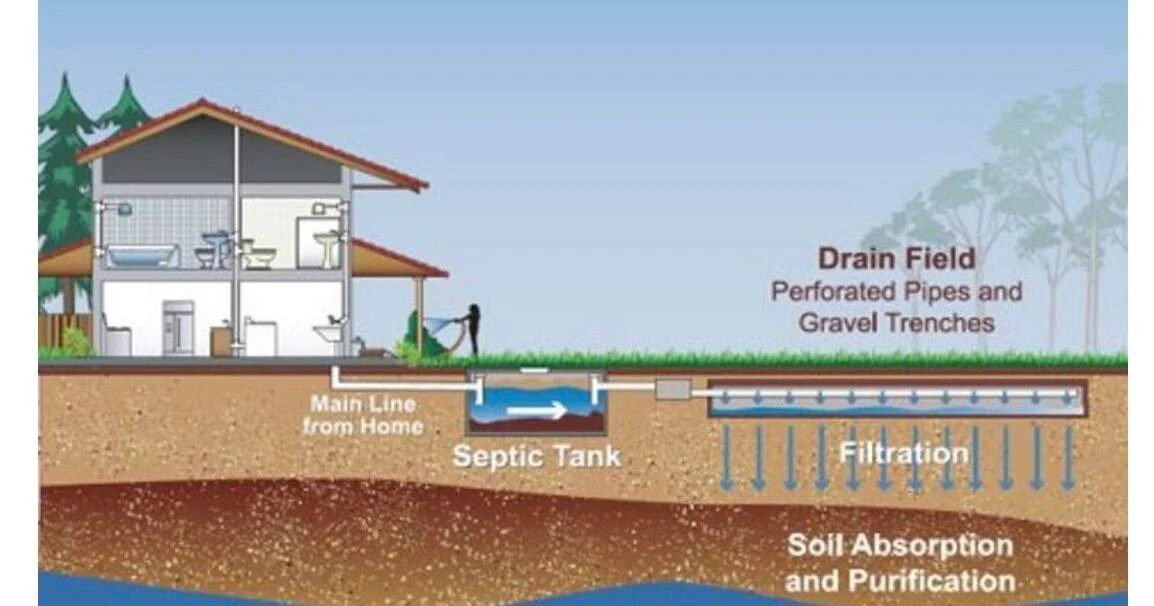A septic system is crucial for homes not connected to municipal sewage. It treats wastewater on-site. The system consists of a septic tank and a drainfield. Wastewater flows from your home into the tank. Here, solids settle and bacteria break down organic matter. The liquid then flows into the drainfield for further treatment.
Regular Maintenance: The Key to Safety
Experts at Johnson Septic Service believe regular maintenance is vital. It ensures your system functions properly and also prevents environmental hazards.
–Pump Your Tank
Pump your septic tank every 3-5 years. This frequency depends on household size and water usage. Regular pumping prevents solids from entering the drainfield. It also allows for inspection of the tank’s condition.
–Inspect Regularly
Annual inspections can catch problems early. Look for signs of failure. These include wet spots in the yard or slow-draining fixtures. Professional inspections every 3 years are recommended.
Water Conservation Measures
Conserving water helps your septic system function efficiently. It reduces the load on the system. Overloading your septic system with excessive water can lead to premature failure and costly repairs. By implementing water conservation measures, you protect your septic system and contribute to broader environmental sustainability efforts.
–Fix Leaks Promptly
A leaky faucet can waste gallons daily, so fix leaks as soon as you notice them. This simple step can significantly reduce water entering your septic system.
–Use Water-Efficient Fixtures
Install low-flow toilets and showerheads to reduce water usage without sacrificing comfort. They can cut your water consumption by 30-50%.
Proper Waste Disposal
What goes down your drain matters. Proper waste disposal protects your system and the environment.
–Avoid Harmful Substances
Never pour chemicals down the drain. This includes paint, oil, and pesticides. These can kill beneficial bacteria in your tank. They may also contaminate groundwater.
–Use Septic-Safe Products
Choose cleaning products labeled as septic-safe, but avoid antibacterial soaps and bleach. These can disrupt the bacterial balance in your tank.
Protect Your Drainfield
The drainfield is crucial for treating wastewater. Protecting it ensures your system’s longevity and environmental safety.
–Avoid Compacting the Soil
Don’t drive or park vehicles on your drainfield. This compacts the soil. Compacted soil can’t effectively filter wastewater.
–Manage Landscaping
Plant only grass over your drainfield. Tree roots can damage pipes. Direct rainwater away from the area to prevent oversaturation.
Be Mindful of What You Flush
Your toilet isn’t a trash can. Be careful what you flush.
–Flush Only Human Waste and Toilet Paper
Avoid flushing non-biodegradable items. This includes wipes, diapers, and feminine hygiene products. These can clog your system.
Stay Informed About Local Regulations
Environmental standards for septic systems vary by location. Stay informed about local regulations.
–Check Local Codes
Contact your local health department. Learn about specific requirements in your area. Some regions require regular inspections or specific maintenance practices.
–Obtain Necessary Permits
If you’re installing or modifying your system, get proper permits. This ensures your system meets current standards.
Educate Your Household
Everyone in your home should understand septic system care. Education prevents costly mistakes.
–Create a Maintenance Schedule
Post a maintenance schedule where everyone can see it. Include pumping dates and inspection reminders.
–Teach Proper Usage
Explain what can and can’t go down the drains. Make sure everyone understands the importance of water conservation.
A well-maintained septic system protects your property and the environment. Regular care, proper usage, and staying informed are key. By following these guidelines, you’ll ensure your septic system remains safe and compliant with environmental standards. Your efforts contribute to cleaner groundwater and a healthier ecosystem.



